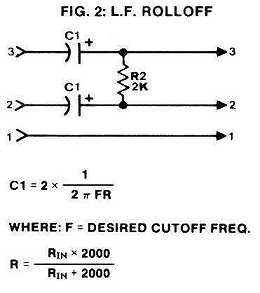earthsled
Well-known member
The simple HPF constituted by a series cap (with or without a damping res) can be tuned higher by decreasing the value of the cap. You must experiment to adjust the proper value. The problem ther is that this type of filter can be anything from first to second order, depending on the actual inductive and resistive parts of the impedance. If the input behaves like a pure resistor, the frequency is inversely proportional to capacitance, if it was purely inductive, the frequency would be inversely proportional to the square -root of the capacitance. Since it is actually a mix pf resistor and inductor, the relationship is somewhat unpredictable.
Keeping the filter before the input transformer, would it make sense to make it balanced? Like this...

If so, would 2K be a good value to use? I'm assuming the cap value would still need to be adjusted because of the inductance of input transformer, but would the formula (in the image) be a good place to start?








